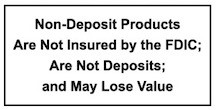Budgeting is an essential tool for managing your finances effectively and achieving your financial goals. It provides a roadmap for your income and expenses, helping you make informed decisions about spending, saving, and investing. In this article, we will explore the art of budgeting and provide practical tips on how to take control of your finances.
- Assess Your Income and Expenses: To create an effective budget, start by assessing your income and expenses. Calculate your total monthly income from all sources and list your fixed expenses such as rent or mortgage payments, utilities, and loan repayments. Then, identify your variable expenses such as groceries, transportation, entertainment, and discretionary spending. Understanding your cash flow is the first step in taking control of your finances.
- Set Realistic Financial Goals: Financial goals provide a sense of purpose and direction for your budget. Whether it’s paying off debt, saving for a down payment, or building an emergency fund, setting realistic goals helps you prioritize your spending and align your budget accordingly. Break down your goals into short-term, medium-term, and long-term objectives, and assign specific amounts or timelines to each goal.
- Track Your Spending: Tracking your spending is crucial for identifying areas where you can make adjustments and save money. Use a budgeting app or spreadsheet to categorize your expenses and monitor your spending habits. Review your spending regularly to identify patterns, unnecessary expenses, or areas where you can cut back. Awareness of your spending habits is key to making conscious financial decisions.
- Differentiate between Needs and Wants: Distinguishing between needs and wants is fundamental in budgeting. Needs are essential for survival and maintaining a basic standard of living, while wants are discretionary and can be adjusted or eliminated. Prioritize your needs in your budget, ensuring that they are covered first, and allocate a portion of your income to wants while keeping them within reasonable limits.
- Implement the 50/30/20 Rule: A popular budgeting rule is the 50/30/20 rule, which allocates your after-tax income into three categories. Fifty percent is dedicated to needs, such as housing, utilities, and groceries. Thirty percent is allocated to wants, such as dining out, entertainment, and hobbies. Twenty percent is reserved for savings and debt repayment. Adjust these percentages based on your individual circumstances and financial goals.
- Create an Emergency Fund: Building an emergency fund is a crucial aspect of budgeting. An emergency fund provides a financial safety net for unexpected expenses or income disruptions. Aim to save at least three to six months’ worth of living expenses in a separate savings account. Automate your savings by setting up automatic transfers from your paycheck or checking account to ensure consistent contributions.
- Reduce Debt: Budgeting can help you tackle and reduce debt. Prioritize debt repayment by allocating a portion of your income to pay off outstanding balances. Consider using the debt snowball or debt avalanche method, where you either focus on paying off the smallest debt first or the one with the highest interest rate. As you pay off one debt, allocate that amount towards the next debt in line, accelerating your progress.
- Find Opportunities to Save: Look for opportunities to save money within your budget. Cut back on unnecessary expenses like eating out, subscription services you no longer use, or excessive shopping. Consider negotiating lower interest rates on loans or credit cards, switching to more affordable insurance plans, or exploring discounts and promotions for regular expenses. Every saving adds up and contributes to your financial stability.
- Plan for Irregular Expenses: Irregular expenses, such as annual insurance premiums, car maintenance, or holiday gifts, can disrupt your budget if not accounted for. Anticipate these expenses by setting aside a portion of your income each month into a separate sinking fund. This way, when the expense arises, you already have the necessary funds available and can avoid going into debt or depleting your emergency fund.
- Review and Adjust Your Budget: Budgeting is not a one-time exercise but a continuous process. Regularly review your budget to track your progress, make adjustments, and adapt to changing circumstances. Life events, income fluctuations, or new financial goals may require you to revise your budget accordingly. Be flexible and make necessary modifications to ensure your budget remains effective and aligned with your priorities.
In conclusion, mastering the art of budgeting is a powerful tool for taking control of your finances. By assessing your income and expenses, setting realistic goals, tracking your spending, differentiating between needs and wants, implementing budgeting principles like the 50/30/20 rule, creating an emergency fund, reducing debt, finding opportunities to save, planning for irregular expenses, and regularly reviewing and adjusting your budget, you can gain financial control, reduce stress, and work towards achieving your long-term financial objectives. Start budgeting today and embark on a path towards financial success.


